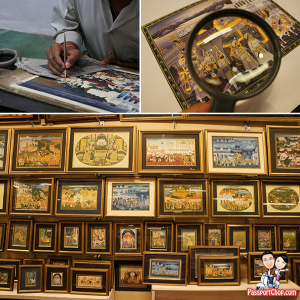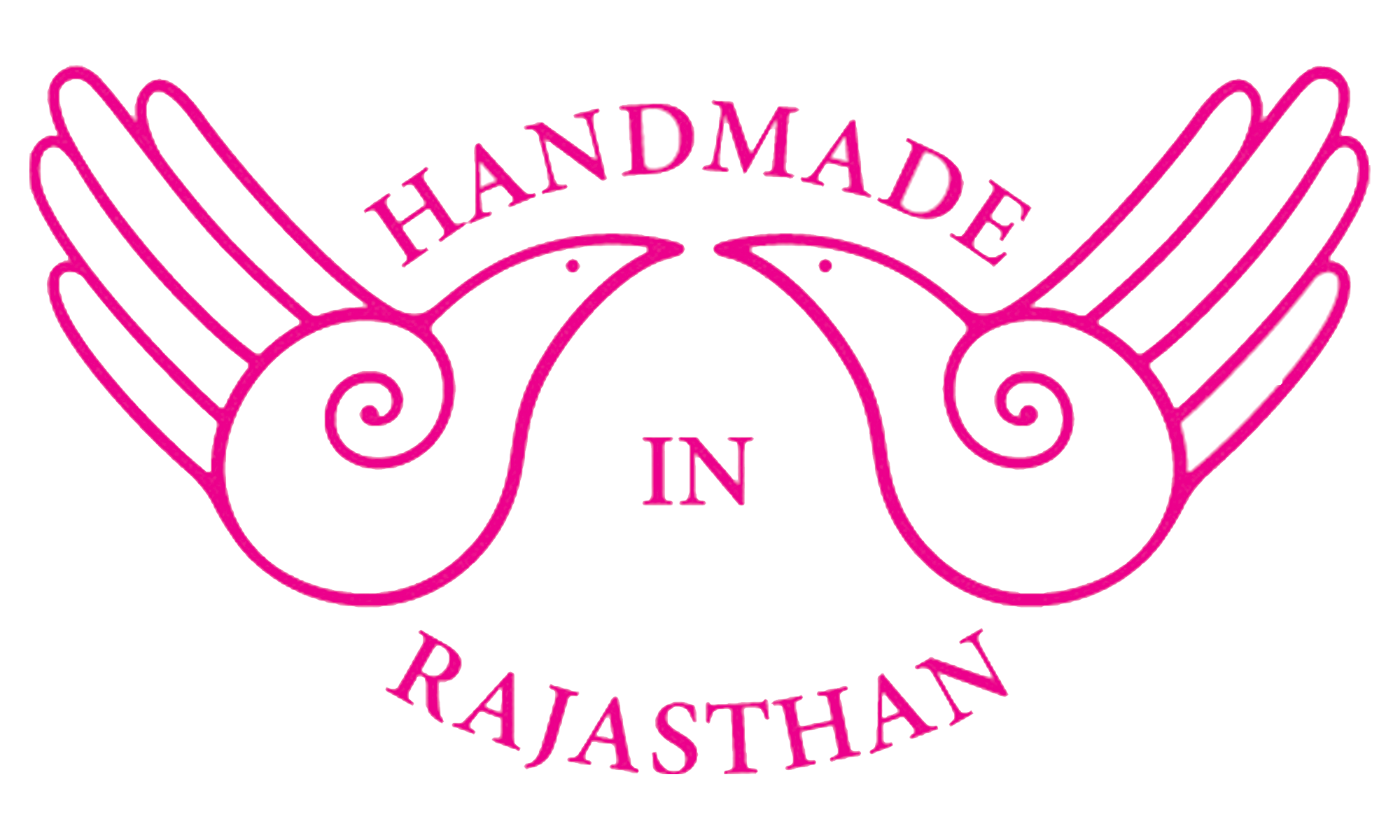- Home
- About US
- Art and Craft
- Artisans
- Master Crafts Persons
- Supporting Institutions
- News and Events
- Schemes
- Contact us
- Contact

Miniature Paintings of Rajasthan in the 16th Century, the incredibly detailed enchanting visual narratives of royal festivities.Drawn on paper or sometimes ivory, the miniatures were painted with extremely fine brushes made by inserting just a few strands of squirrels’ tail hair into bird feathers. It is not just the final act of painting, which required excellence, but preparation of the colours was another effort requiring patience and perseverance. The colours were all derived from nature and many days of toil would result in extraction of a miniscule amount of rich, exquisite colour.
The colour red was extracted from the dried fruit of Peepal tree, orange from Palash flower, green from leaves and black from stones. The colour yellow had a fascinating process of extraction. It was derived from the dried up urine of a sick cow. Gold or silver colours were obtained by boiling the metal with “Saras” (Camel musk) and water. It would be rubbed on a plate and ground by hand for 2-3 days to get a miniscule amount of very fine, precious concoction.
The colour would be mixed with water and natural gum to prepare it for application. It had to be made sure that the colour is extremely fine and uniform because the painting was so small, that even a tiny lump out of place would spoil it. Therefore, sometimes months were spent only in grinding the colour into a smooth paste, making sure the consistency is absolutely even.
Along with depicting events in a two dimensional perspective style, the artists found another outlet for their creativity in the multiple borders, which were at times, more lavish than the main painting. The Miniature paintings of Rajasthan were originally commissioned by the Rajput kings, but Mughal influence came to be seen in them, in terms of clothing, facial features and architecture.
In Udaipur, Rajasthan, there are many craftsmen who have learnt this art from their forefathers, who were artists for the kings. Udaipur based craftsman Devendra Kumar Guad’s great grandfather was the chief artist for the King of Udaipur and his descendants have kept this art alive.
Now made for decorative purposes, the paintings depict beautiful palace or forest scenes from the artists’ imagination, on small pieces of silk or paper, but taking a closer look; it is easy to get lost in a world of detail. Irrespective of size, the painting is valued for its fineness and intricacy and the amount of time and effort that goes into it.
Today, even though synthetic paints and readymade brushes are used frequently, the painting style remains the same. The craftsmen sometimes still use natural colours for painting, although their extraction process is much faster and more efficient. Marble is used as a substitute for ivory, and only the highly experienced master craftsmen use marble as a base. The rest use paper or silk, which they sometimes dip in tea water to give a sepia tinge.
The paintings are small in size, but they are extremely detailed and elaborate and this requires a high degree of skill and experience. In the intricate design, there is no way to hide even a small brushstroke gone wrong.

